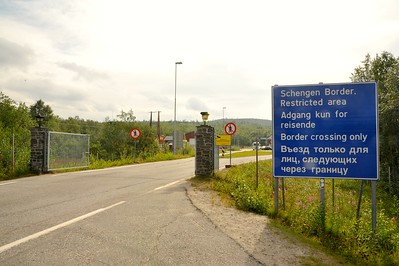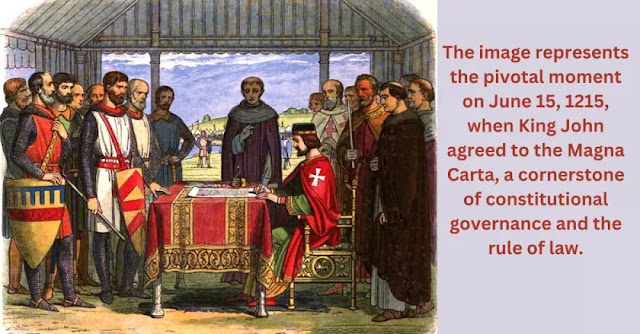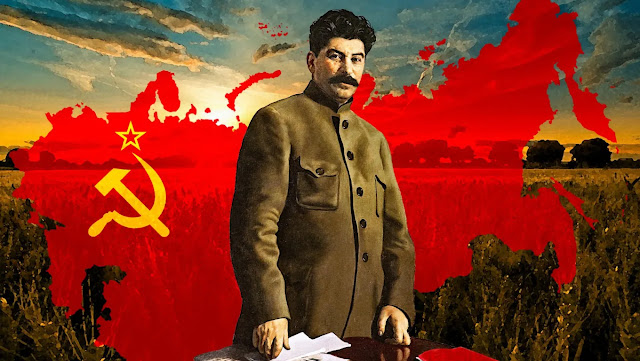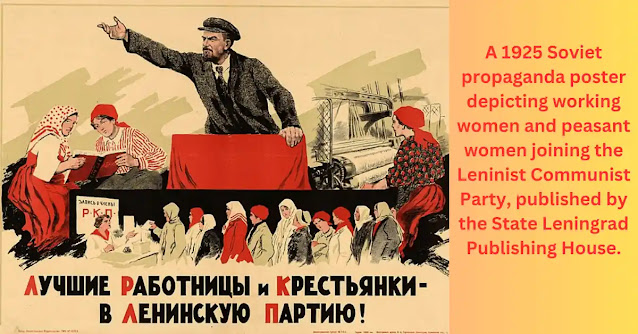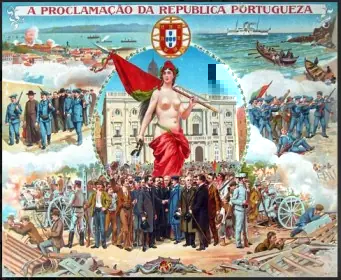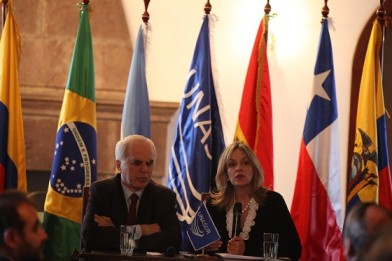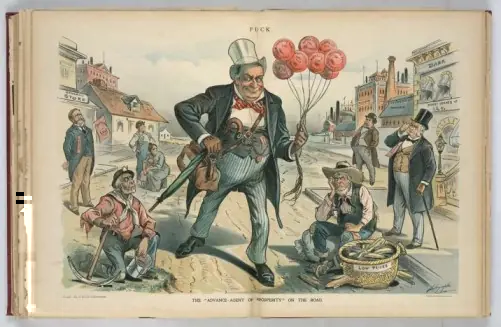The Yalta Conference: A Turning Point in Global Diplomacy
The Yalta Conference, held from 4th to 11th February 1945 in Yalta (located in Ukraine, currently under Russian occupation), brought together leaders from the United States, Britain, and the Soviet Union to discuss the future of World War II and postwar arrangements. Key decisions were made regarding the participation of the Soviet Union in the Pacific theater against Japan, as an ally of the United States and Britain, within a few months after Germany’s surrender. In exchange for Soviet assistance, territories in Manchuria and the Kurile Islands were promised to the USSR.
Additionally, discussions centered on the division of Germany, the governance of Eastern Europe, and the formation of the United Nations. During the Yalta Conference, an agreement was also reached to establish a broadly representative government in Poland, including members from diverse political backgrounds, with free and fair elections planned for the country’s democratic future.
The Yalta Conference, held in the closing stages of World War II, brought together the leaders of the Allied powers –Franklin D. Roosevelt, Winston Churchill, and Joseph Stalin to negotiate key issues that would shape the geopolitical landscape for decades to come. The Yalta Conference marked a significant turning point in global diplomacy, as it laid the foundation for the post-war political world order and shaping the geopolitical landscape for decades to come.
 |
| Image Source Google, Allied leaders pose in the courtyard of Livadia Palace, Yalta |
💻 Table of Contents:
- Clash of Visions: Tensions and Different Goals at the Yalta Conference
- Strategic Military Coordination and the Pacific War: Insights from Yalta
- The Rise of Communism: The Soviet Union’s Influence Expands
- Truman Doctrine: Challenging Soviet Influence & Formation of NATO
- Formation of the United Nations: Dumbarton Oaks and Yalta Conferences
- The American Strategy for UN Formation Succeeds
Clash of Visions: Tensions and Different Goals at the Yalta Conference
Despite their wartime alliance, tensions between the leaders escalated as they discussed the reorganization of Europe. Roosevelt, Churchill, and Stalin each had differing visions for rebuilding the continent. Roosevelt sought Soviet participation in the United Nations and assistance in the Pacific War, while Churchill advocated for democratic elections in Central and Eastern Europe. Stalin aimed to establish a Soviet sphere of influence in these regions to create a buffer zone against Western capitalism.
Key outcomes of the Yalta Conference included the unconditional surrender of Nazi Germany, the division of Germany and Berlin into four occupation zones, and the reorganization of Poland under a communist government. Stalin’s actions in Poland, despite promises of free elections, led to the strengthening of communist rule through the manipulation of elections and the suppression of opposition.
The subsequent Potsdam Conference in July-August 1945, attended by Truman, Attlee, and Stalin, further discussed post-war issues. Agreements were made regarding the decentralization and democratization of Germany, the prosecution of Nazi war criminals, and the shifting of Germany’s borders. Additionally, the conference saw the announcement of the Potsdam Declaration drawing terms of surrender for Japan.
Ultimately, the Yalta and Potsdam Conferences set the stage for the division of Europe into Eastern and Western spheres of influence, with Germany serving as a focal point. The establishment of East Germany as a Soviet-aligned communist state and West Germany as a capitalist democracy highlighted the geopolitical divide that defined the Cold War era.
Strategic Military Coordination and the Pacific War: Insights from Yalta
The Yalta Agreement, signed on February 11, 1945, organized during a critical stage in the waning days of World War II, centered on discussions regarding postwar arrangements and strategic military coordination. Notably, key decisions were reached regarding Soviet participation in the Pacific theater against Japan.
The agreement also discussed various territorial and geopolitical issues, including the restoration of Russian rights violated by Japan’s attack in 1904, the internationalization of the port of Dairen, and the joint operation of railroads in Manchuria. Furthermore, the Kuril Islands were to be transferred to the Soviet Union. The agreement emphasized that these Soviet claims would be fulfilled after Japan’s defeat, pending the agreement of Generalissimo (Commander in Chief) Chiang Kai-shek of China.
 |
| Image Source: Google, Potsdam Conference |
The Soviet Union also expressed its readiness to form a friendship and alliance pact with China’s National Government, aiming to provide military assistance in liberating China from Japanese occupation. The Yalta Agreement solidified the alliance between the United States, Britain, and Russia, setting the stage for the post-war order and the subsequent formation of the United Nations.
Despite initial positivity, subsequent strains emerged following President Roosevelt’s passing and the transition in American leadership. Critics later criticized the outcomes of the conference, accusing Roosevelt of surrendering to Soviet demands and effectively ‘handing over’ Eastern Europe and Northeast Asia. Even in a speech delivered in Riga in May 2005, President George Bush acknowledged the Soviet domination of Eastern Europe as “one of the greatest wrongs of history” and accepted America’s role in enabling it to occur. He recognized that the Yalta agreement of 1945, involving Josef Stalin, Winston Churchill, and Franklin Roosevelt, paved the way for Soviet occupation in Europe. Drawing comparisons, he likened it to the appeasement of Hitler and the Soviet-Nazi pact of 1939.
Amidst these arguments, strategic military coordination, particularly concerning the defeat of Japan and the conclusion of the Pacific War, remained a key focal point of negotiation. The strategic military coordination and the Pacific War plans were an insightful legacy of US President’s engagement, shaping the course of events and future strategies.
Moreover, the conference shed light on the increasing Soviet influence in Eastern European nations liberated from Nazi control, raising concerns among Western powers about the spread of communism and laying the groundwork for the looming Cold War tensions.
The Rise of Communism: The Soviet Union’s Influence Expands
The Potsdam Conference, held from July 17 to August 2, 1945, involved the United States, Great Britain, and the Soviet Union. President Harry Truman represented the United States following the death of Franklin D. Roosevelt, while Clement Attlee replaced Winston Churchill as the British Prime Minister.
Tensions were high due to Stalin’s actions in Poland and Eastern Europe, leading to increased caution in negotiations with him. The agreements reached at Potsdam included the decentralization, demilitarization, denazification, and democratization of Germany, the division of Germany and Berlin into occupation zones, the prosecution of Nazi war criminals, the return of Nazi annexations to pre-war borders, and the shifting of Germany’s eastern border.
 |
| Image Source: Google, Atomic Bomb Damage to Hiroshima |
According to the Yalta agreement, the Soviet Union was scheduled to join the war against Japan on August 15. Although the Potsdam declaration did not clearly mention the atomic bomb, President Truman had informed Stalin about a new powerful weapon during the conference. The timing of the atomic bombings on August 6 and 9 suggests that Truman wanted to keep the Soviet Union out of the Pacific War and post-war negotiations with Japan.
Additionally, the use of nuclear weapons served as a warning to the Soviet Union and marked the end of cooperation between the two sides. This event also initiated the nuclear arms race, which became a defining feature of the geopolitical dynamics between the United States and the Soviet Union during the Cold War. Truman’s decision to withhold specific information about the atomic bomb can be seen as a strategic move to maintain a sense of advantage and to prevent the Soviet Union from gaining too much knowledge about the United States’ nuclear capabilities.
The Soviet Union, under the terms of the Non-Aggression Pact with Nazi Germany, annexed territories in eastern Poland in September 1939. They also engaged in a war with Finland to establish a buffer zone for the protection of Leningrad. After the war, Finland ceded the demanded territories, including Karelia, to the Soviets. The Soviet Union further annexed the Baltic States (Estonia, Latvia, Lithuania) and Moldova in 1940. Prior to 1939, other territories such as parts of Ukraine, Uzbekistan, Kazakhstan, Belarus, Azerbaijan, Georgia, Tajikistan, Kyrgyzstan, Turkmenistan, and Armenia had also been annexed.
💻 You May Also Like:
- Warsaw Pact: The Forgotten Soviet Military Alliance
- The Cold War: Collapse of Soviet’s Communist Empire & American Triumph
- The Crimean War: A Battle for Global Strategic Significance & Power Rivalries
In addition to these annexations, several countries in Eastern Europe operated as Soviet satellite states. While not officially part of the USSR, these countries had governments loyal to Stalinism and aligned themselves politically and militarily with the Soviet Union through the Warsaw Pact.
The Warsaw Pact refers to a military and political alliance established in 1955 among the Soviet Union and several Eastern European countries. It was created as a response to the formation of NATO (North Atlantic Treaty Organization) by Western powers. The Warsaw Pact aimed to strengthen the collective defense of its member states and promote cooperation among communist nations in the face of perceived threats from the West. This Pact included the Soviet Union and seven other Eastern European countries: Albania, Bulgaria, Czechoslovakia, East Germany, Hungary, Poland, and Romania (Albania withdrew in 1968).
The Yalta Conference eventually also played a significant role in the emergence of the Iron Curtain concept as it set the stage for the division of Europe into two spheres of influence, which ultimately led to the Cold War. The term “Iron Curtain” refers to the symbolic division of Europe between the Eastern bloc, led by the Soviet Union, and the Western bloc, led by the United States, during the Cold War. It represented the ideological and political divide between communist and capitalist countries, and the physical and ideological barriers that separated them.
 |
| Image Source: Google, Europe Iron Curtain |
Truman Doctrine: Challenging Soviet Influence & Formation of NATO
The Truman Doctrine, introduced by President Harry Truman in 1947, emerged as a response to the changing dynamics of international politics following the Yalta Conference and the Potsdam Conference. These conferences, held in 1945, shaped the post-World War II order and laid the foundation for the emerging Cold War between the United States and the Soviet Union.
At the Yalta Conference, the leaders of the Allied powers—Franklin D. Roosevelt, Winston Churchill, and Joseph Stalin—discussed the division of post-war Europe and the establishment of areas where each country would have more control or influence. While the conference aimed to maintain cooperation among the Allies, tensions emerged over the Soviet Union’s actions in Eastern Europe, where it sought to establish communist governments in countries liberated from Nazi control.
The Potsdam Conference, attended by Truman, Churchill’s successor Clement Attlee, and Stalin, further highlighted the divisions between the Western powers and the Soviet Union. Tensions were high, and mistrust grew due to Stalin’s actions in Poland and Eastern Europe, as well as the Soviet Union’s refusal to allow free elections in those regions.
In response to expansion of Russia’s Communism, President Harry Truman formulated the Truman Doctrine, which represented a departure from America’s previous isolationist stance and aimed to contain the spread of communism. It was a direct response to the Soviet Union’s increasing influence in Eastern Europe and the fear that the spread of communism would destabilize democratic nations.
In 1947, President Truman delivered a speech to Congress urging financial aid for Greece and Turkey. The Greek government was struggling with a communist uprising, while the Soviet Union posed a threat to Turkey’s control over the Turkish straits. Truman successfully persuaded Congress to provide $400 million in aid to assist both countries.
The Truman Doctrine extended beyond Europe. The Korean and Vietnam Wars were fought to stop communism, while in Latin America, the US tried to overthrow Fidel Castro’s communist regime in Cuba.
Overall, the Truman Doctrine, emerging in the aftermath of the Yalta Conference and the Potsdam Conference, marked a significant shift in US foreign policy. It aimed to contain the spread of communism and was implemented through various means, including financial aid, military interventions, and the formation of alliances. The Cold War influenced global politics as the United States and the Soviet Union competed for power and ideological control.
Formation of the United Nations: Dumbarton Oaks and Yalta Conferences
The Dumbarton Oaks Conference held in 1944 set the stage for the formation of the United Nations (UN) by outlining its structural framework. However, crucial details, such as the voting procedure in the Security Council, were left open for further deliberation. These discussions were then taken up at the Yalta Conference in 1945.
At the Yalta Conference, which included leaders Winston Churchill, Franklin D. Roosevelt, and Joseph Stalin, the issue of the Security Council’s voting procedure was finally resolved. In discussions about the United Nations’ future, everyone agreed to the “American Plan” for how the Security Council would vote. This plan came after France joined as a permanent member, giving each permanent member the power to veto council decisions.
It was agreed that the Security Council would consist of eleven members, with five permanent members and six members chosen by the General Assembly for two-year terms.
Additionally, the Yalta Conference called for a United Nations Conference to be held in San Francisco on April 25, 1945. The primary objective of this conference was to draft the charter for the UN, following the principles and proposals put forth during the formal conversations at Dumbarton Oaks (a Harvard University research institute in Washington, DC.).
The Dumbarton Oaks proposals were widely discussed and examined across the Allied countries. The need for armed forces to be made available to the Security Council was emphasized, as this would help prevent wars and suppress acts of aggression among member states. It was recognized that the absence of such a force had been a significant weakness of the previous international organization, the League of Nations.
The American Strategy for UN Formation Succeeds:
The League of Nations was founded on January 10, 1920, as an international organization aimed at promoting peace and preventing future conflicts. It was established in response to the devastation caused by World War I and as a result of President Woodrow Wilson’s advocacy (Father of the League of Nations) for collective security and international cooperation.
But the United States did not join the League of Nations, despite President Woodrow Wilson was the leading architect (for which he received the Nobel Peace Prize 1919) in its establishment, due to domestic political opposition and concerns over the potential infringement on national sovereignty. The US Senate, in particular, was divided on the issue. Critics argued that joining the League would potentially entangle the US in foreign conflicts and compromise its ability to act independently. As a result, the US Congress did not ratify the Treaty of Versailles, which included the League Agreement, leading to the United States not being a member of the League of Nations.
The League of Nations dissolved on April 20, 1946, primarily because of its failure to prevent the outbreak of World War II. Subsequently, the United Nations was established as a more effective international organization for promoting peace and security based on successful negotiations and the American plan.
During the Second Italo-Ethiopian War (1935–36), the League of Nations accused Italian soldiers of deliberately targeting medical tents belonging to the International Red Cross and Red Crescent Movement; Benito Mussolini responded that “the League is very well when sparrows shout, but no good at all when eagles fall out.“
One aspect of America’s post-World War II influence and success was its prominent role in establishing and hosting key international institutions. The United States played a significant role in the creation of the United Nations, which has its headquarters in New York City. Additionally, Washington, D.C., is home to the headquarters of both the World Bank and the International Monetary Fund (IMF). While these achievements contributed to America’s global influence, factors such as the Bretton Woods system played a more direct role in the emergence of the US dollar as a dominant currency in the world economy.
 |
| Image Source: Google, First Meeting of UN Security Council |
In short words, the Bretton Woods system was an international monetary system established in 1944 at the Bretton Woods Conference in New Hampshire, United States. It aimed to promote global financial stability and facilitate international trade and investment in the aftermath of World War II. Under this system, countries agreed to fix the value of their currencies to the U.S. dollar, which was in turn linked to gold at a fixed exchange rate. The U.S. dollar became the primary reserve currency, and the International Monetary Fund (IMF) was created to oversee the system and provide stability in exchange rates. The Bretton Woods system played a significant role in shaping the international monetary order until it collapsed in the early 1970s.
Conclusion:
Following the Yalta Conference, tensions escalated as the Soviet Union solidified control over Eastern Europe, leading to concerns about the spread of communism. The Truman Doctrine represented a significant shift in US foreign policy, emphasizing containment strategies to counter Soviet influence globally.
This approach established in military interventions, such as the Korean and Vietnam Wars, aimed at aggressive communist expansion. Additionally, efforts to overthrow communist regimes, as seen in the Bay of Pigs invasion in Cuba, underscored the intense ideological rivalry of the Cold War era. Here, The Bay of Pigs Invasion was a failed military landing operation by the US-backed Cuban Democratic Revolutionary Front to overthrow the government of Fidel Castro in Cuba. It occurred on 17–20 April 1961, at a seaport situated on the southwest coast of Cuba.
Besides, the establishment of the Warsaw Pact and NATO further divided Europe into opposing spheres of influence, intensifying East-West tensions.
Truman’s strategic decisions, including the use of atomic weapons and diplomatic maneuvers, shaped the geopolitical landscape and set the stage for decades of ideological confrontation. Despite subsequent criticism and reassessment of wartime agreements, the Yalta Conference remains a pivotal moment in 20th-century history, shaping the course of post-war international relations and laying the groundwork for the Cold War era. Finally, the Yalta Conference established a political world order led by the Big Five, which laid the groundwork for the creation of the United Nations, an organization dedicated to international peace and security.
Frequently Asked Questions
The Yalta Conference (1945) resulted in the unconditional surrender of Nazi Germany, the division of Germany and Berlin into four occupation zones, and the reorganization of Poland under a communist government. Stalin's actions in Poland, despite promises of free elections, solidified communist rule through manipulated elections and suppression of opposition.
The Bretton Woods system, established in 1944, fixed global currencies to the U.S. dollar, which was linked to gold. It created the IMF to oversee exchange rate stability and promoted global financial stability until its collapse in the early 1970s.
The Truman Doctrine, introduced by President Harry Truman, aimed to contain the spread of communism by providing economic and military aid to nations threatened by Soviet influence, marking a shift from U.S. isolationism.
The Iron Curtain symbolized the division of Europe during the Cold War, separating the Soviet-led Eastern bloc from the U.S.-led Western bloc. It represented the ideological and political barriers between communist and capitalist nations.
The Warsaw Pact, formed in 1955, was a Soviet-led military alliance of Eastern European countries, including the Soviet Union, Albania, Bulgaria, Czechoslovakia, East Germany, Hungary, Poland, and Romania (Albania withdrew in 1968). It countered NATO's influence.
The Bay of Pigs Invasion (April 17–20, 1961) was a failed U.S.-backed operation by Cuban exiles to overthrow Fidel Castro's government in Cuba, ending in defeat within 24 hours. What were the outcomes of the Yalta Conference?
What was the role of Bretton Woods in shaping the international monetary system?
What is the Truman Doctrine in simple terms?
What was the Iron Curtain and what did it do?
What was the Warsaw Pact and which countries were members?
What happened at the Bay of Pigs invasion?

